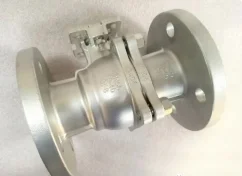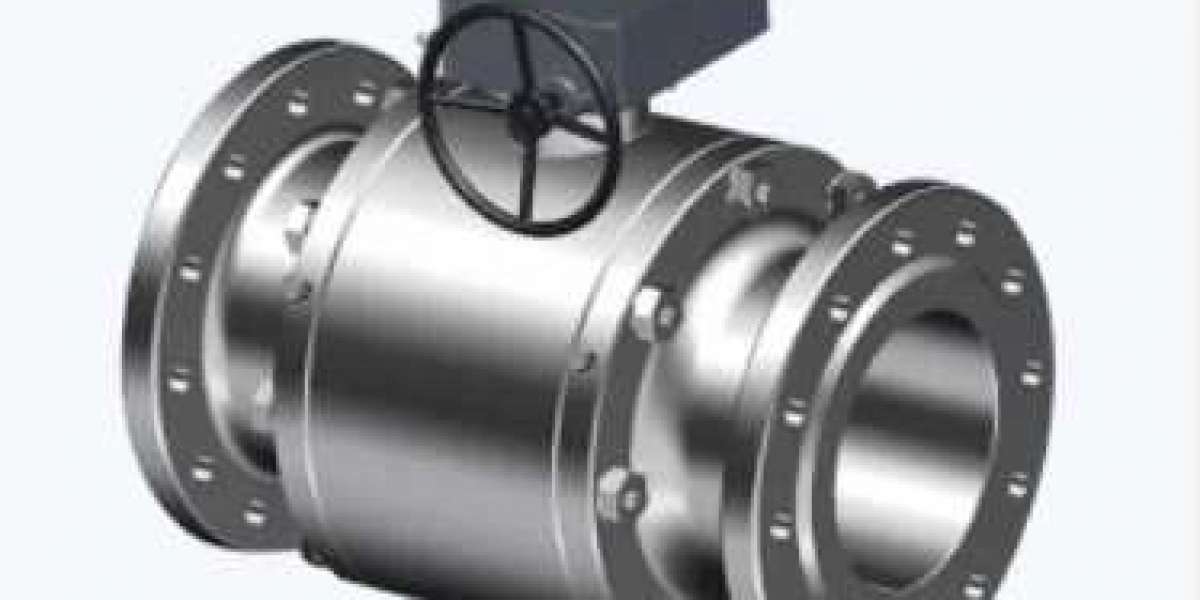The most commonly used materials for Ball valve soft sealing surfaces are rubber and Teflon. Today, Kaiwen will lead you to understand the above two Ball valve soft sealing surface materials, I hope to help you.
1) Ball valve rubber seat seal.
Rubber (often called elastomer in foreign countries) is a material that can be quickly restored to its original state from a large deformation state or a material that can be restored to its original state by forced means. When the rubber is compressed, it can deform greatly to fill the microscopic unevenness of the metal surface, and when the stress is removed, it can restore its original shape. This phenomenon is called the "memory characteristic" of the material, so many engineering Occasions choose rubber sealing rings as the sealing material.
Rubber seals are often used in ball valves (especially pipeline ball valves), butterfly valves, and diaphragm valves. The biggest difference between the pipeline ball valve and the conventional ball valve is that the valve seat sealing ring is often made of rubber instead of PTFE plastic. DIB-1 and DIB-2 functions. Rubber has been widely used in pipeline ball valves and achieved good results mainly due to the fundamental change in the sealing principle.
If a polymer material, such as PTFE, is used as the material of the valve seat sealing ring of the secondary main seal, the medium force caused by the pressure difference acts on the Ball valve seat, pushing the valve seat to contact the sphere, and the contact stress on the polymer material The sealing ring is deformed macroscopically to achieve the sealing effect. Since the polymer material is not an elastic body, local plastic deformation will occur under the action of the medium force.
If the rubber is used as the material of the ball valve seat sealing ring, the medium force acting on the valve seat only pushes the valve seat toward the sphere. This force does not need to be very large, and the real sealing force is a part of the medium entering the rubber groove. The elastic deformation of the side compression elastic body occurs, like a spring being compressed, the elastic body acts on the surface of the sphere through its own force to restore the original shape. This Ball valve sealing principle is called the elastic body self-deformation sealing principle. Obviously, the sealing effect is much better. As long as the gap between the groove and the spherical surface of the Ball valve is reasonably selected, the maximum sealing pressure difference can reach 320x105Pa.
The rubber is used as the sealing material of the pipeline ball valve, and its cross-sectional shape can be made O-shaped and triangular. The Shore hardness of the rubber is 98, and it is firmly locked in the groove. The most commonly used rubber materials are T49/TB Sh98 (HNBR hydrogenated nitrile turban), T58Sh98 (FKM Viton) perfluoro ether rubber, T58/VED (FKM explosion-proof Viton) explosion-proof perfluoro ether rubber and T58/GLT (Sh989FKM Viton GLT) ) perfluoro ether rubber

When the pipeline ball valve is in normal operation, the rubber used for sealing is affected by the infiltration and dissolution of the dissolved gas on its surface to a greater or lesser extent. After a period of time, the gas content of the rubber will reach saturation. As long as there is a balance between the gas pressure inside the rubber and the environment, there will be minimal damage and no loss of sealing performance unless it is affected by other factors such as chemical, thermal degradation, or extrusion damage. However, once the pressure around the rubber suddenly disappears (such as a burst pipe), the gas that has penetrated into the rubber body cannot be released quickly enough, and explosive decompression (ED) damage will occur, causing the rubber to lose its sealing performance. This damage does not appear immediately, sometimes after several hours, so rubber surfaces that do not have explosion-proof decompression (AED) properties will show cracks, blisters, internal cracks or scars, etc.
A foreign oil company discovered the explosion and decompression damage of the Ball valve on a deep-sea platform for the first time. After the valve failed, the company had to stop the operation for several weeks to replace the valve, resulting in heavy losses. Since then, oil companies have required high-pressure valves provided by valve manufacturers such as Ball Valves to have explosion-proof pressure relief functions, and have developed special test standards, such as NORSOKM710 and TOTAL GS PVV142. In 2002, the American Petroleum Institute Standard API 6D (22nd Edition) stipulated that valves with design pressure greater than or equal to PN100 (CLASS600), including ball valves and butterfly valves, must be designed as explosion-proof pressure relief.
2) Ball valve PTFE valve seat sealing ring.
Polytetrafluoroethylene (PTFE) is often used as a ball valve seat and valve packing. The biggest disadvantage of PTFE is that it does not have "memory characteristics", its elastic range is small, and its plasticity range is large, and when the stress reaches a certain level, the phenomenon of "cold flow" will occur.
For example, at room temperature, the ultimate stress of "cold flow" of PTFE is 42MPa; when the temperature is 150℃, the ultimate stress of "cold flow" is 4.7MPa.
Another disadvantage of PTFE is the thermal expansion characteristics, the thermal expansion coefficient of PTFE is 7.5 times that of steel. When the temperature rises, the interference of the ball valve sealing material increases, the closing torque of the valve increases, and the switch fails; when the temperature drops, the ball valve sealing material shrinks, the interference that keeps the seal disappears, and the valve leaks.
In order to overcome the defects of PTFE's "cold flow" and thermal expansion characteristics and improve its "memory characteristics", the ball valve seat is often designed with a flexible lip seal technology.
When using seats with other Ball valve sealing face materials, the temperature-pressure rating should be consulted with the supplier.
3) Ball valve sealant seal
Some Ball valves are equipped with a sealant injection device that periodically injects sealant into the Ball valve seat and stems to ensure an effective seal over an extended period of time. After the Ball valve is closed, the sealant injected between the valve sealing surfaces can block the leak path. Oil-sealed plug valves and pressure-balanced plug valves are metal-seat valves that rely entirely on this sealing method. Other valves (such as pipeline ball valves) can also be injected with sealant to provide a temporary emergency seal after the original seal fails.
The above is all of today's content. Ball valve seat seals with rubber seat seals often use rubber instead of PTFE plastic, and must be designed as explosion-proof pressure relief; Ball valves with PTFE seat seals have "cold flow" And the defects of thermal expansion characteristics, so the ball valve seat is often designed with flexible lip sealing technology; the Ball valve sealed with sealant can regularly inject sealant into the Ball valve seat and valve stem so that it can be used for a long time. Guarantees an effective seal.








